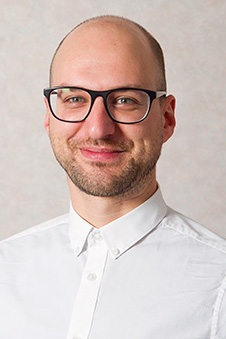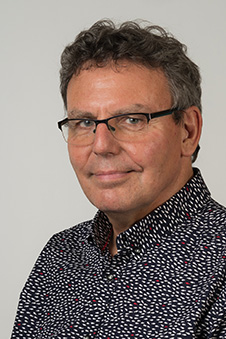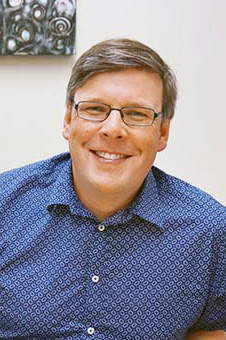
The successful proposals for the 2023 Endeavour Fund were selected by the Science Board, an independent statutory Board, following review by independent experts from New Zealand and overseas.
University of Otago researchers have been awarded more than $32 million in the latest Ministry of Business, Innovation and Employment’s (MBIE) Endeavour Fund.
The Endeavour fund is split into two categories – Smart Ideas and Research Programmes. Three Programmes, and four Smart Ideas from Otago were granted funding ranging from $1 million to more than $10 million, for their potential to transform Aotearoa New Zealand’s economy, environment and society.
Professor John Reynolds, of the Department of Anatomy has been granted $10,180,560; Professor Tobias Langlotz, of the Department of information Science, $8,208,513; and Professor Peter Dearden, of the Department of Biochemistry, $9,923,945 for their respective programmes. Dr Eng Tan, of the Department of Chemistry, Dr Sam Lowery, of the Department of Physics, Dr Monica Tromp, of the Southern Pacific Archaeological Research group, and Associate Professor Lyn Wise, of the Department of Pharmacology and Toxicology, have each been awarded $1 million.
University of Otago Deputy Vice Chancellor Research and Enterprise Professor Richard Blaikie offered his sincere congratulations to the recipients.
“This funding will allow three teams of our leading researchers and their collaborators to deliver impactful research over the next five years, with benefits for tourism, health and the environment,” he says.
“Four other teams will be supported to work on their outstanding research ideas over the next three years, again with the aim of delivering real-world impact. A number of others will also contribute to collaborative projects led from other institutions.
“We are very happy that our success in this highly competitive process has reaffirmed Otago as one of our nation’s leading research institutions, based on the criteria of research excellence and potential for impact that are used for selection by the MBIE Endeavour Fund.”
Research programmes
Professor Tobias Langlotz, $8,208,513

Professor Tobias Langlotz.
He karapitipitinga mariko – Immersive regenerative tourism experiences in Aotearoa
Tourism is in the midst of a global crisis. While tourists, tourism operators, and destination managers are negotiating the immediate effects of a global pandemic, it is also timely to address the serious systemic issues that were confronting the industry before the current crisis arose and create a new model with a focus on low carbon travel, ecosystem restoration, and community participation, with mana whenua exercising their role as kaitiaki at the forefront.
This 5-year research program will create a technology-supported ‘new tourism’ model and radically transform the sector to address Aotearoa’s need for a more sustainable tourism industry. He karapitipitinga mariko – Immersive regenerative tourism experiences in Aotearoa, uses Virtual and Mixed Reality technologies to enable tourism without travel, enhancing local-based tourism, reducing carbon emissions from international travel, open up environmentally sensitive areas in a safe manner, and allowing tangata whenua to be in control of how their knowledge is shared. We will allow tourism businesses to offer both virtual (that do not require tourists to travel physically at all) and augmented physical (on site) visitor experiences independently or simultaneously, enabling tourists to explore Aotearoa in ways currently not possible. It will also generate unique insights into virtual tourism, supporting tourism providers to better understand the implications of this approach.
In an interdisciplinary project bringing together academic leaders from tourism, indigenous knowledge, and technologists and in partnership with the tourism industry and local communities, we will innovate the sector and build a tourism future that is economically more productive and resilient to crises, while enhancing tourism’s social, cultural and environmental sustainability, and creating memories that last long after the physical experience of the destination has ended.
Professor John Reynolds, $10,180,560

Professor John Reynolds.
A window into the brain: smart wearable technologies to target neurological disorders
Professor Reynolds is leading an international team of world class scientists to develop a new wearable technology to change the way neurological disorders like Parkinson’s Disease and brain cancers are treated.
Their revolutionary approach is a “wearable hat” that generates beams of sound and light energy beyond the range of human perception, focused on specific regions deep in the brain. The focused beams cause specially developed drug carriers administered in the blood stream to release their medical payloads at precise locations when and where they are required. The hat will be operated on demand and can be used on the move and away from the hospital or clinic. This will be especially useful for remote communities and for in-home treatment with whānau and family.
The precise targeting and timing of drugs to specific parts of the brain means for Parkinson’s Disease better life-changing outcomes for patients, with reduced side-effects, vastly improving existing treatments which are imprecise, wear off over time, and can be surgically invasive. Targeting cancer therapies to the precise area of the tumour in the brain will vastly improve treatment for brain cancers and reduce treatment side effects. Other neurological conditions will also benefit from the knowledge gained and technology developed from this research.
This world-leading technology utilises existing New Zealand manufacturers and will enhance the medical technology industry. New technology jobs will be created here to make and sell high value medical products to the rest of the world.
Māori participation in all aspects of the project provides technical and cultural attributes unique to New Zealand leading to unanticipated utilities and advantages to maximise the benefits for all New Zealanders.
Professor Peter Dearden, $9,923,945

Professor Peter Dearden.
Whatu raranga o ngā koiora – weaving cultural authority into gene-drives targeting wasps
Invasive pests damage our economy, environment and health. Control or eradication of those pests is expensive and often environmentally damaging. Novel methods for pest control are going to be needed if we are to reach goals such as Predator Free 2050, or to keep back the tide of pests that assail us. Gene-drives are a genetic technology, untried and controversial, that may solve some of our pest problems. Unfortunately, we don’t know if we can make gene drives that are safe, efficacious, socially acceptable and fit for purpose to control New Zealand’s pests. Without this information, we cannot be sure if gene-drives are something we should embrace, or avoid. We aim to provide this missing information by developing gene drives in containment to control invasive social wasps.
The key to developing socially acceptable gene drives is to ensure they are built with advice from the public, Māori groups, and regulators. We will carry out a programme of consultation with public and Māori groups to determine attitudes to gene-drive technologies, innovations from mātauranga Māori and find ways to mitigate concerns raised in the gene-drive systems we develop. Feeding in this information, and that from regulators, we aim, in containment to develop and test wasp gene-drive technologies.
The data we produce will go on to inform public discussion and evidence-based decision-making regarding the adoption, or not, of gene-drives for pest control.
Smart Ideas – all $1 million
Dr Eng Tan
Mitigating Indoor Agricultural Ammonia Emissions with Wool Composite
This project will develop an innovative technology for absorbing excess ammonia using sheep’s wool to mitigate the adverse effects of ammonia pollution from indoor agricultural operations.
Excess ammonia in the environment is a public concern as it is toxic to both humans and animals, promotes unwanted algal growth in waterways, and causes air pollution through the formation of small airborne particles. Current ammonia scrubbing systems involve the use of harsh toxic chemicals that require complex storage, handling, and disposal protocols, and the associated health-and-safety and compliance considerations. We envisage that the use of a natural under-valued material that is relatively abundant in New Zealand (course sheep's wool) that does not require specialised handling, will have environmental and economic benefits as well as ease-of-uptake and use.
We have recently discovered that appropriately treated sheep’s wool can reduce ammonia concentration in an air-flow. We will study this unique phenomenon through surface studies of the treated wool fibre to create a product that can be used to sequester ammonia in the air. We plan to investigate the regeneration of the treated wool product for repeated use, and harvesting of the captured ammonia for productive applications
Our team consists of academic and industrial scientists, and industry partners, who can make use of the deep wool expertise in New Zealand. Although agricultural applications will serve as a demonstration, we can see the use of this technology in other applications to create other products, from personal protection equipment (PPE) to alternative-fuel production.
Dr Sam Lowery
Next generation condensing heat exchanger technology: design, development and demonstration
Heating, Ventilating, Air-conditioning, and Refrigeration equipment is estimated to account for around 20 per cent of global electricity use and around 8 per cent of global emissions.
Unfortunately, this equipment suffers from a build-up of water films that reduces their efficiency.
If a means could be found to manage this water and stop the films forming, it is estimated that the equipment’s efficiency could be lifted by 30 per cent to 40 per cent. This would have a major positive impact on the demand for electricity and GHG emissions.
Our Smart Idea addresses this problem by using micro patterned surfaces in the heat exchangers (HX) to remove droplets of water before they collapse into films.
There are two major problems standing in the way of this solution. Developing and reproducing the necessary patterns at a mm2 scale and being able to design heat exchanger surfaces to give this desired overall performance.
We will use our team’s skills in:
- Microfabrication, microfluids, computational fluid dynamics, thermodynamics, and high-speed motion capture to design the necessary patterns and reproduce them using 3D printing
- Machine learning and generative AI to develop tools to design the micro patterns based on the performance required of the exchanger surface. The latter is not possible using traditional software because there are simply too many options to allow more traditional approaches to optimisation.
The team will be advised by a range of companies in the HX manufacturing and AI software areas; organisations involved with appliance efficiency and its impact on emissions; and those involved in the development of Manufacturing 4.0 in NZ that this project will contribute to.
Dr Monica Tromp
Developing a minimally invasive species identification protocol for taonga tūturu
This project will create a minimally invasive and inexpensive sampling technique to identify the animals used in manufacturing taonga tūturu, precious objects created by Māori artisans. This will substantially enhance the capabilities of the museum and heritage sector to find and engage meaningfully with the custodians of these taonga.
Taonga tūturu have whakapapa (genealogies) that connect them to Te Ao Māori (the Māori world), but through the process of colonisation, the provenance of many of these objects in museums is unknown. Species identification of many taonga tūturu materials is impossible visually, and currently available destructive sampling impacts the mauri (life force) of taonga tūturu.
Collagen peptide mass fingerprinting (Zooarchaeology by Mass Spectrometry or ZooMS) allows for inexpensive and rapid taxonomic identification of collagenous materials such as bone, skin, and hair, but traditionally requires a piece of an object to be cut off and destroyed.
We aim to develop MIMS (Minimally Invasive Molecular Story) – using a small piece of fine grit polishing film – to collect a small sample for analysis, allowing the mauri (life force) and visible appearance of an object to remain intact while enabling identification of the material. This means taonga tūturu can be cared for in accordance with tikanga and, where appropriate, repatriated.
Beyond taonga tūturu, the optimisation of this technique has exciting applications for contemporary biodiversity and conservation science. It would enable taonga and other species to be readily and inexpensively identified, especially where decomposition or utilisation of the species has made morphological or DNA identification unlikely. Contexts for its use include cetacean and other marine mammal strandings, and applications at the border to identify incoming animal materials and enable compliance with CITES.
Associate Professor Lyn Wise
New Zealand seaweed – a tissue engineering opportunity
Our goal is to create a new, high-value line of products from New Zealand seaweed (rimurimu) through use of an environmentally-friendly technology (pulsed electric field or ‘PEF’) to generate supporting material for tissue engineering.
Tissue engineering enables creation of functional tissues outside or within their animal host and is used for repair of human organs (regenerative medicine) and ethical production of cell-based meat and seafood (cellular agriculture). The supporting materials used must be safe for cells to grow on and provide physical and biological cues that encourage tissue formation. There is an unmet demand for natural materials produced in a sustainable and ethical manner that does not harm the environment.
We propose processing of seaweed can deliver all the requirements for supporting materials and that sustainable production is possible without harsh chemicals or wastage. Our Smart Idea will pioneer the application of PEF to intact seaweed to isolate its cellulose and other active constituents, then establishing their utility for engineering of skin and muscle.
Our internationally recognised team of scientists from University of Otago, Plant and Food Research and Victoria University of Wellington, in partnership with Māori whānau-owned business AgriSea NZ Seaweed, are poised to develop the knowledge, tools and pathways needed to integrate manufacturing of tissue engineering products into a sustainable seaweed sector.
In our Māori-centric approach, we will explore rimurimu whakapapa and seek kawa and tikanga relating to the gathering, storage, traditional use, and protection of rimurimu. This will enable us to seamlessly merge Māori knowledge and perspectives with high-end technology to underpin development of an industry where remote coastal communities will supply seaweed for manufacturing of high-value products for export to tissue engineering industries.
For more information, contact:
Lea Jones
Communications Adviser, Media Engagement
University of Otago
Mob +64 21 279 4969
Email lea.jones@otago.ac.nz